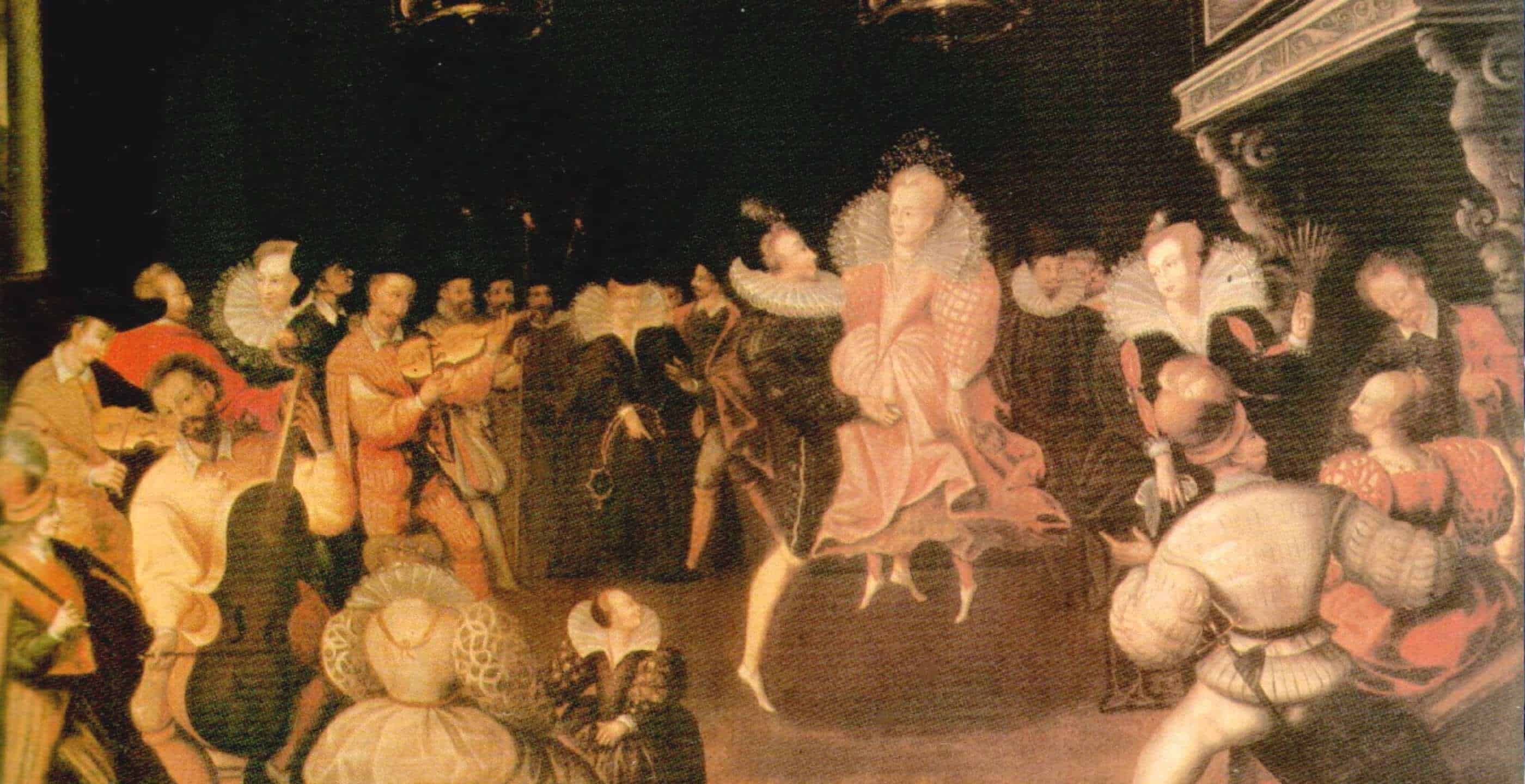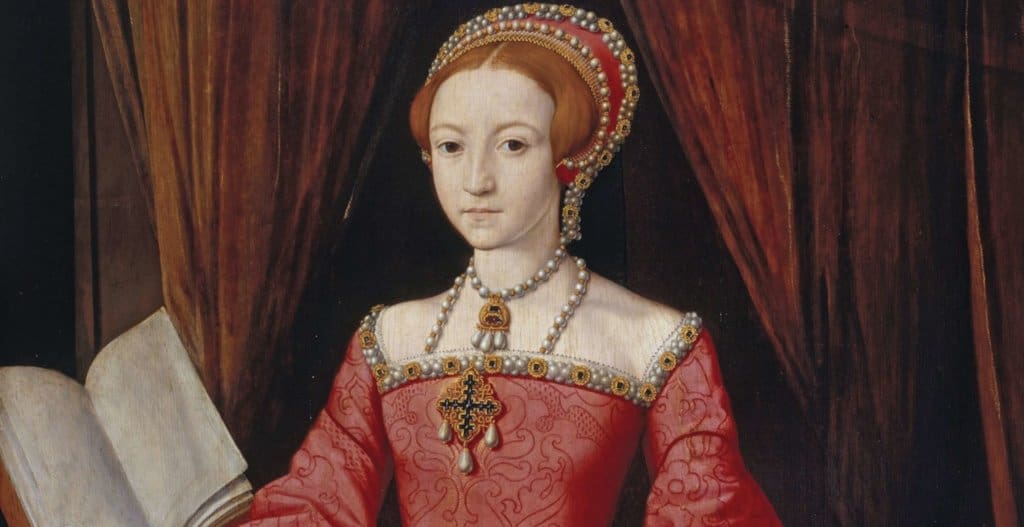Did Tudors wear pants?
This morning my choice of clothes was a rather a haphazard affair. Having planned to spend the day writing, I knew I wasn’t in need of anything spectacular, but even so, the leggings, slippers and fluffy jumper I ended up wearing were about as far from catwalk as Crocs. Clothing is such an important part of our lives; would I wear my current attire for an interview? Certainly not. Why not? Because of course, fashion, even in its most meagre form of day to day wear, is a projection of an ideal identity and a social system to which we all subscribe. This social fashioning has really not changed much at all in the last five hundred years.
Whilst our fashion styles may be poles apart, the relationship between identity and the materials with which we choose to cover ourselves remains firmly intertwined. What we say with our clothes and when we say it, matters. You wouldn’t turn up to work in a tiara, just as you wouldn’t go to a wedding in your pyjamas. The same can be said for the Tudors. In fact, clothing in Tudor times was so significant that what could or could not be worn was solidified in law. A series of Sumptuary Laws were passed across the Tudor period restricting the use of certain materials for clothing based on your place in the social hierarchy.
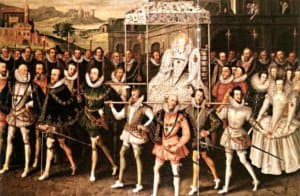
Here are some examples:
‘Only the Royal Family may wear: Any silk of the color of purple, cloth of gold tissued, nor fur of sables’
‘Only those above Viscounts and Barons may wear: Cloth of gold, silver, tinseled satin, silk, or cloth mixed or embroidered with any gold or silver’
‘Viscounts, Barons, Knights of the Garter and Privy Council members may wear: Woolen cloth made out of the realm…in caps only; velvet, crimson, or scarlet; furs, black genets, lucernes…gold or silver or pearl therein’.
‘Those who earn over £100 a year may wear: Satin, damask, silk, camlet, or taffeta’
Interestingly these laws specifically focus on the nobility, giving an element of freedom to those of the middling and lower classes. This is, presumably, because the lower classes could never afford such luxuries as silk, fur and gold. Colours such as red and purple were also restricted. Bright red dye had to be imported from Brazil, which would have looked impressive next to the less vibrant, orangey red made from mudder in England.
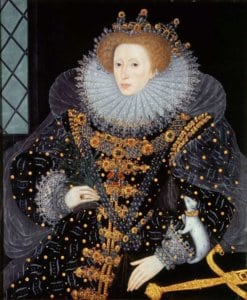 Queen Elizabeth I
Queen Elizabeth I
So, what would you be wearing if you had been born five hundred years ago? Well, firstly, it is important to know that clothes were not available in the way they are today. Items were handmade and came in separate parts. The upside to this is that individual parts could be attached to several different outfits and be recycled (Tudors were fantastic recyclers) or passed on to others with ease. If you had had enough of your frilly cuffs and nobody wanted to inherit them in your family, then your alternative was to sell them on for a bit of extra cash, as fabric was a valuable commodity.
The downside was that each bit of fabric had to be held together with a giant pin…
So, next time you see a portrayal of Tudor ladies moving around in a demure manner, with small, delicate and slightly stiff movements, it is not because they were concerned with their elegance, but rather more with the fact that a pin could poke them in the bottom at any given moment. I think in this situation I would also sit down delicately, wouldn’t you?
Now you are aware that your new Tudor clothes are pinned together and have tamed your movements accordingly, we must put our minds to the finished look. The likelihood is that if you were a member of the middling class your clothes would be made from a mixture of wool and linen. For men in labour-intensive jobs then the simpler the better – a shirt, tunic and trousers. Perhaps a jerkin (a sort of short-sleeved jacket) over the top if it was a chilly day, and a cloak if it was really cold.
If you were lucky enough to be going to an event, however, and high enough in the middling sorts, your attire might well consist of a hose (thick tights), doublet (short sleeved coat with padded shoulders), slashed sleeves revealing another layer of material beneath, and of course your party piece, a decorated cap. Hats were all the rage in Tudor England and it would be highly unlikely to see anyone without one. Men decorated their caps with badges, ribbons and feathers, signifying all sorts of things such as their jobs and places they had visited. When at home in the evening caps would have still been worn, but they were more comfortable and often decorated with embroidery. Oh yes, and of course we must mention the all-important codpiece, prized possession of your masculinity, which, inspired by Henry VIII, had its heyday in the 1540s.
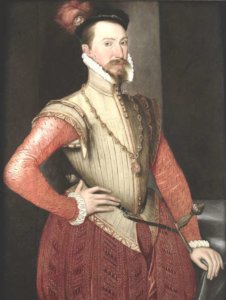 Robert Dudley, sporting a ruff, doublet, leather jerkin and trunk hose with codpiece.
Robert Dudley, sporting a ruff, doublet, leather jerkin and trunk hose with codpiece.
For women, under your dress you would have worn a simple, thin, white dress called a chemise. A chemise was seen as underwear for a lady and is the strange catalyst for history’s most weird fashion item: the ruff. It all began when it started to become fashionable for ladies to show off the fine ruffle at the drawstring neck of their chemise from under their dresses. As the competition for having the finest ruffle grew, they got larger and more extravagant, eventually culminating in the ruff. If you were a lower-class woman, then as well as your chemise you would have worn woollen stockings tied above the knee, with a practical, short dress, simple headdress and an apron.
If you were of higher status and going to an event, then the whole thing would be far more complicated and your outfit might consist of a petticoat, stiffened farthingale (to make sure your skirts keep their shape), corset, parlet (worn over the corset), kirtle (underskirt), bumroll (padding around the hips), headdress and finally your gown with pleated sleeves to reveal the material beneath.
To add the final touch to your Tudor outfit we must add shoes. Leather shoes and boots were the most common, comfortable and hardwearing type of shoe. Wealthy women also enjoyed silk or velvet slip-on shoes for indoor use. There was also a variety of protective shoes as the streets, churned up by carriages, were horrendously muddy in the winter months and full of human waste. To protect the hemline of the dress you spent so long pinning together, you would also own a pair of peculiar looking shoes that most closely resembled platform clogs.
So, there we have it, a whistle-stop Tudor guide to getting dressed. I don’t know about you, but I am feeling a new-found respect for my current ensemble, as ridiculous as it may look.
Oh, and I almost forgot!
Did Tudors wear pants?
Nope, absolutely not.
Chloë-jade Butlin is a freelance writer, teacher and historian based in the East Midlands. She completed a Master’s degree in Early Modern History in 2017 at The University of Birmingham, specialising in material culture and is fascinated by the social, cultural and emotional lives of people in the past. Her most recent publication has been on protective practices in Tudor England for Renaissance Hub Magazine. Chloë-jade is currently in the process of writing a book called ‘Welcome to the Ancients: A short guide to humans who lived a very, very long time ago’.
